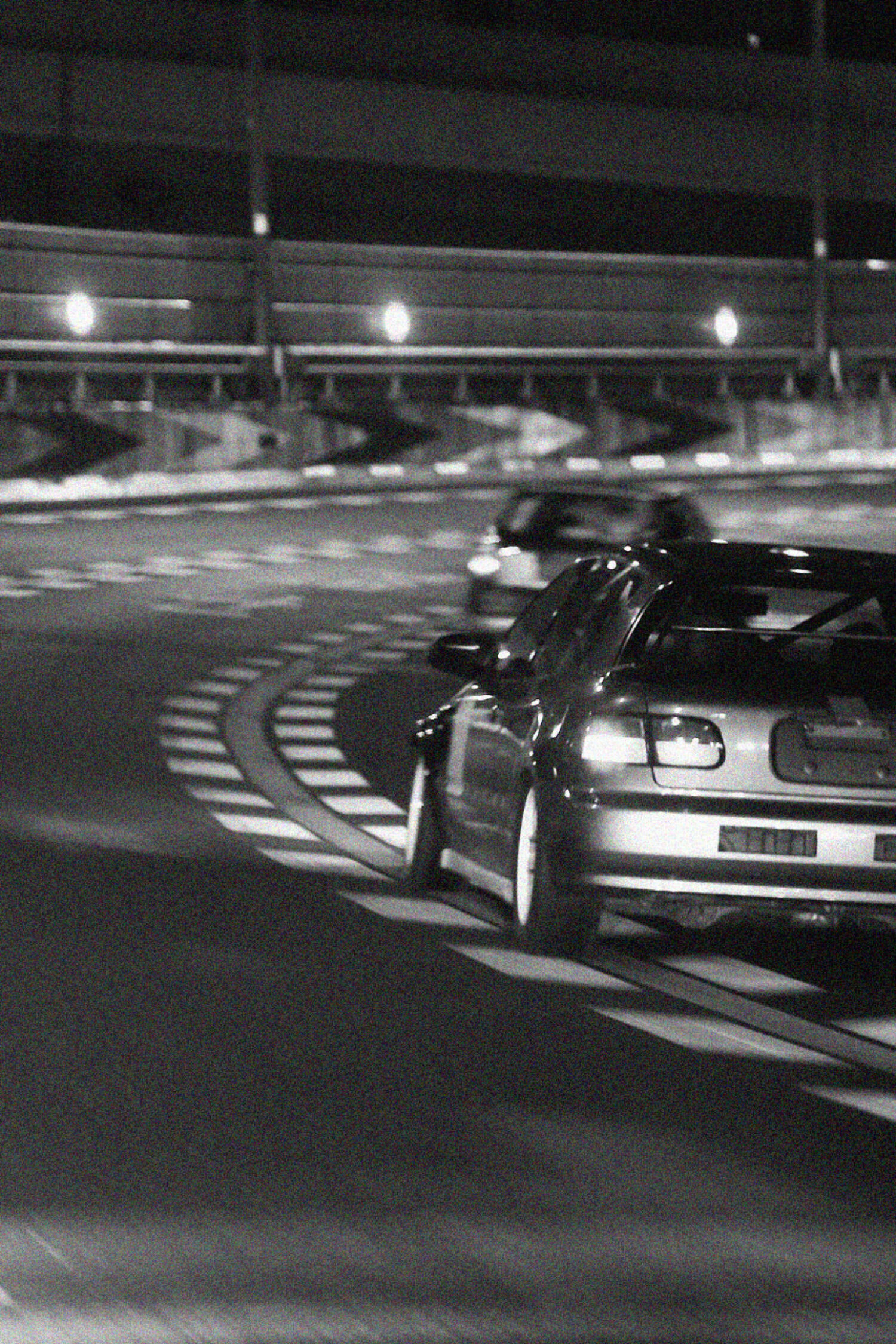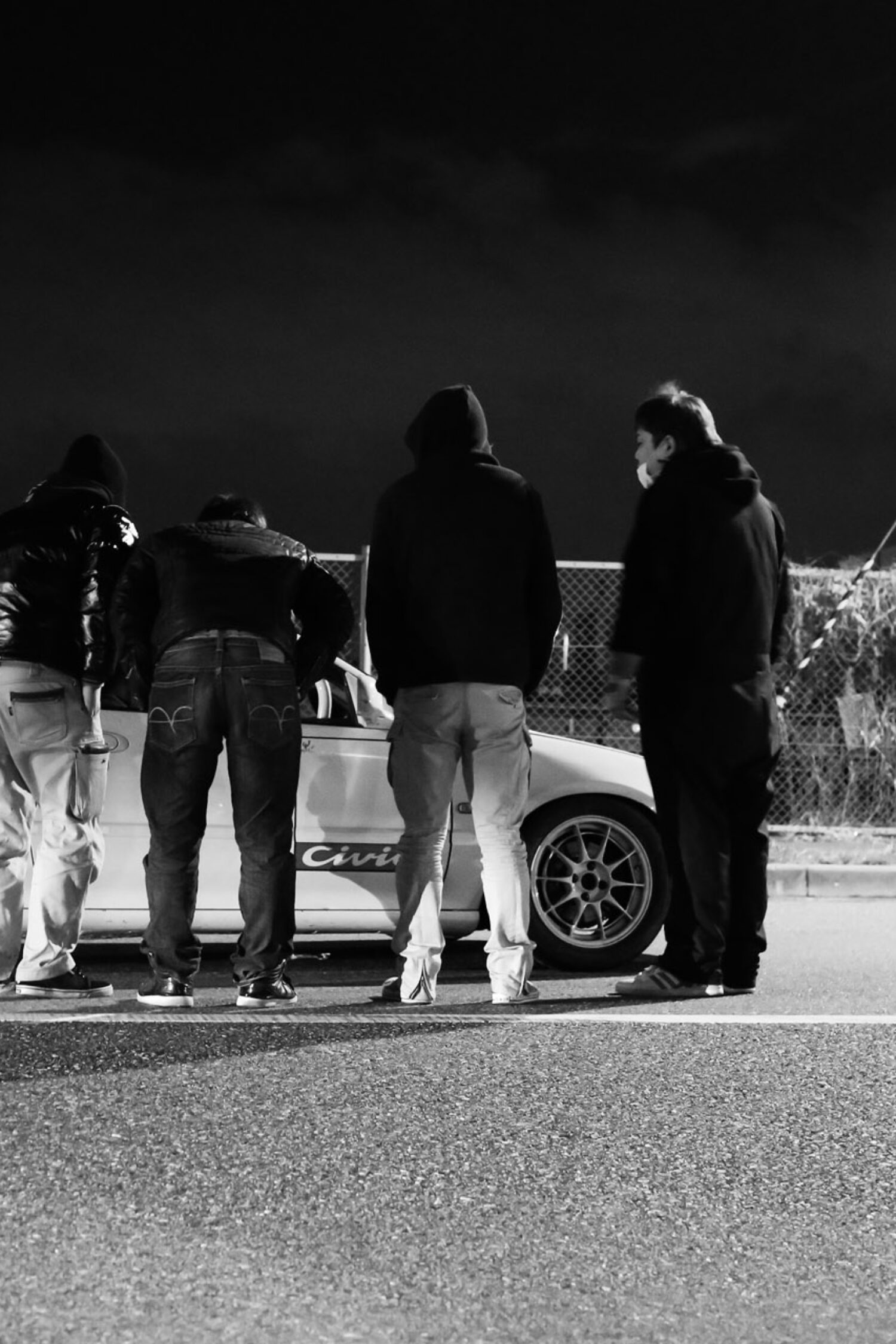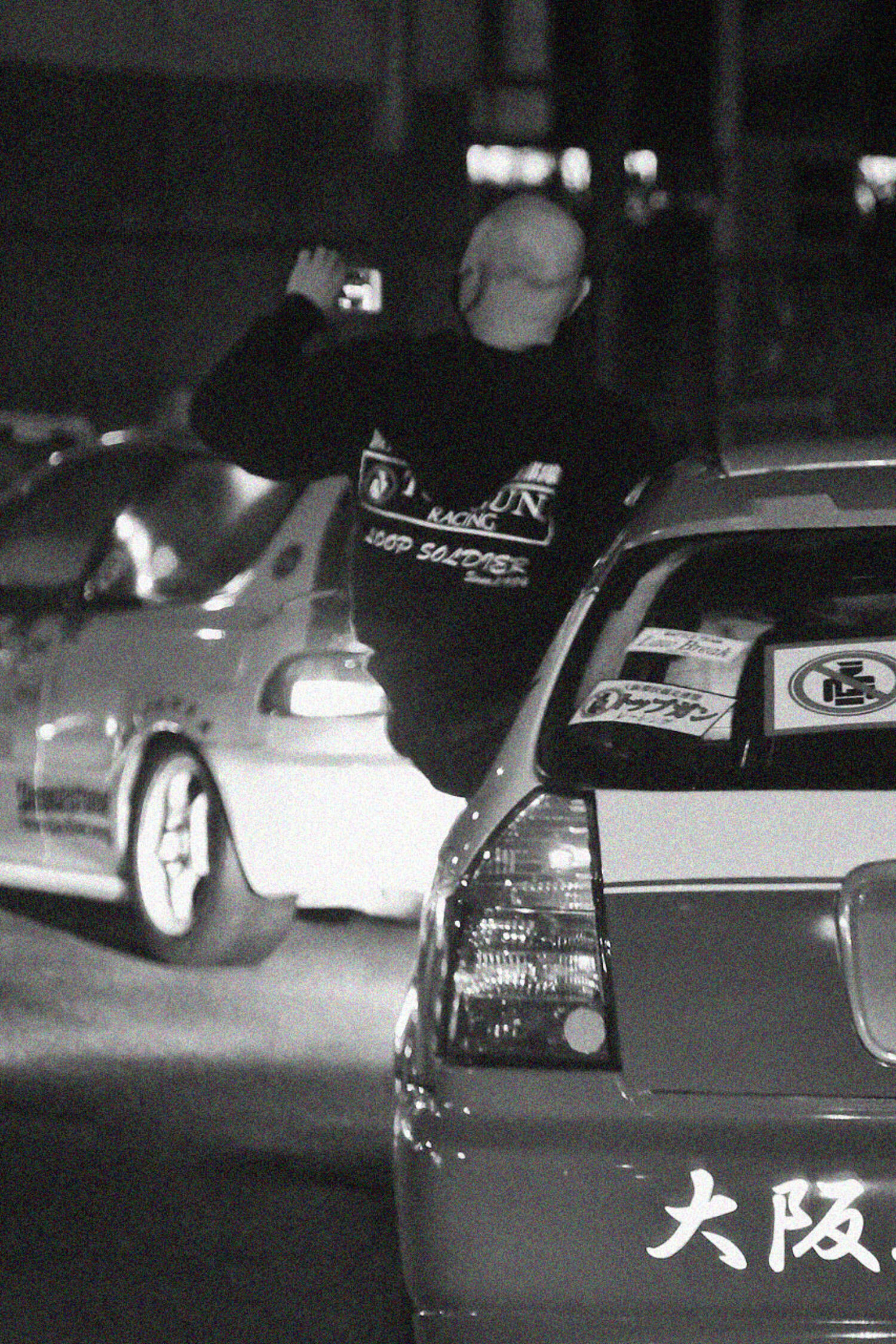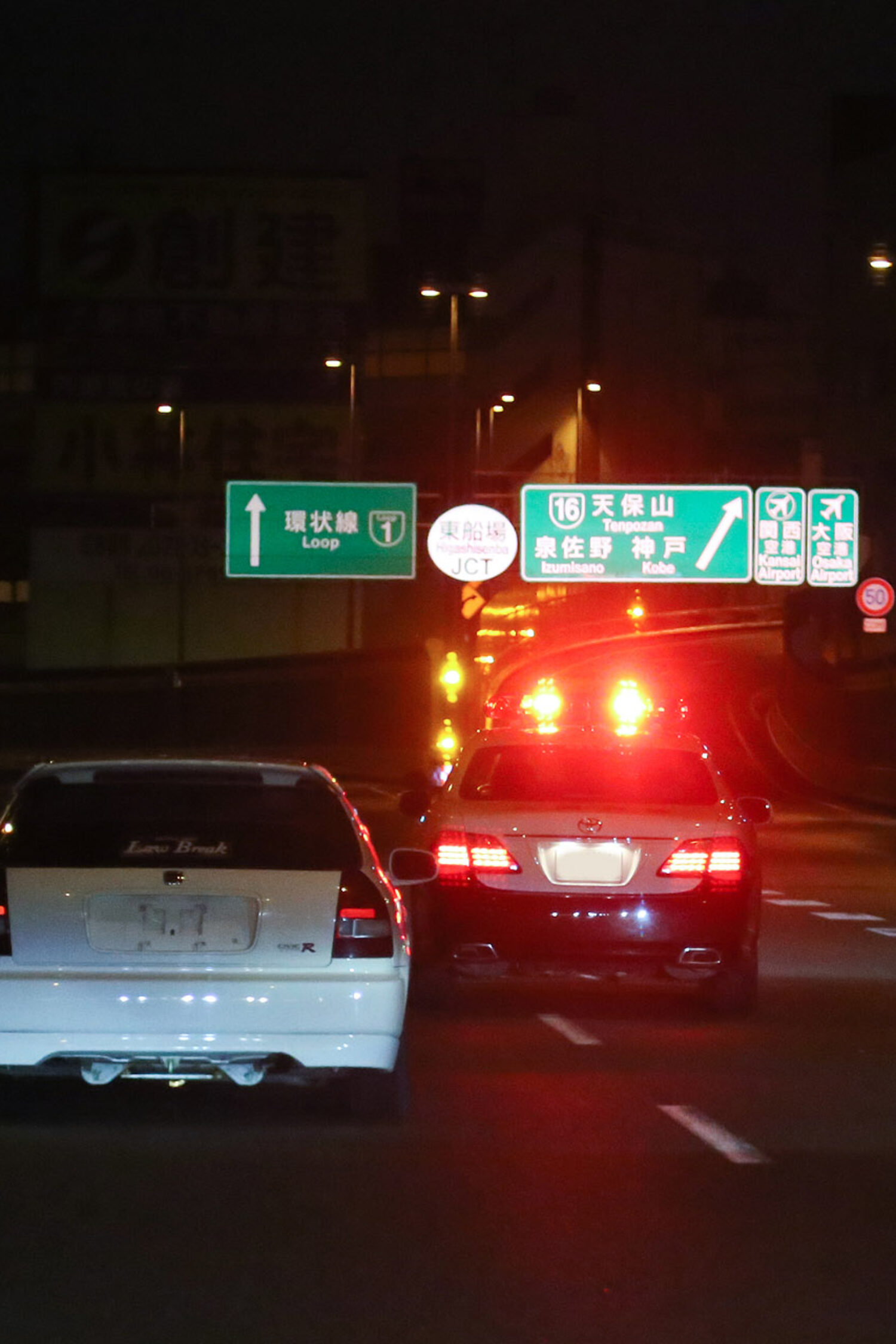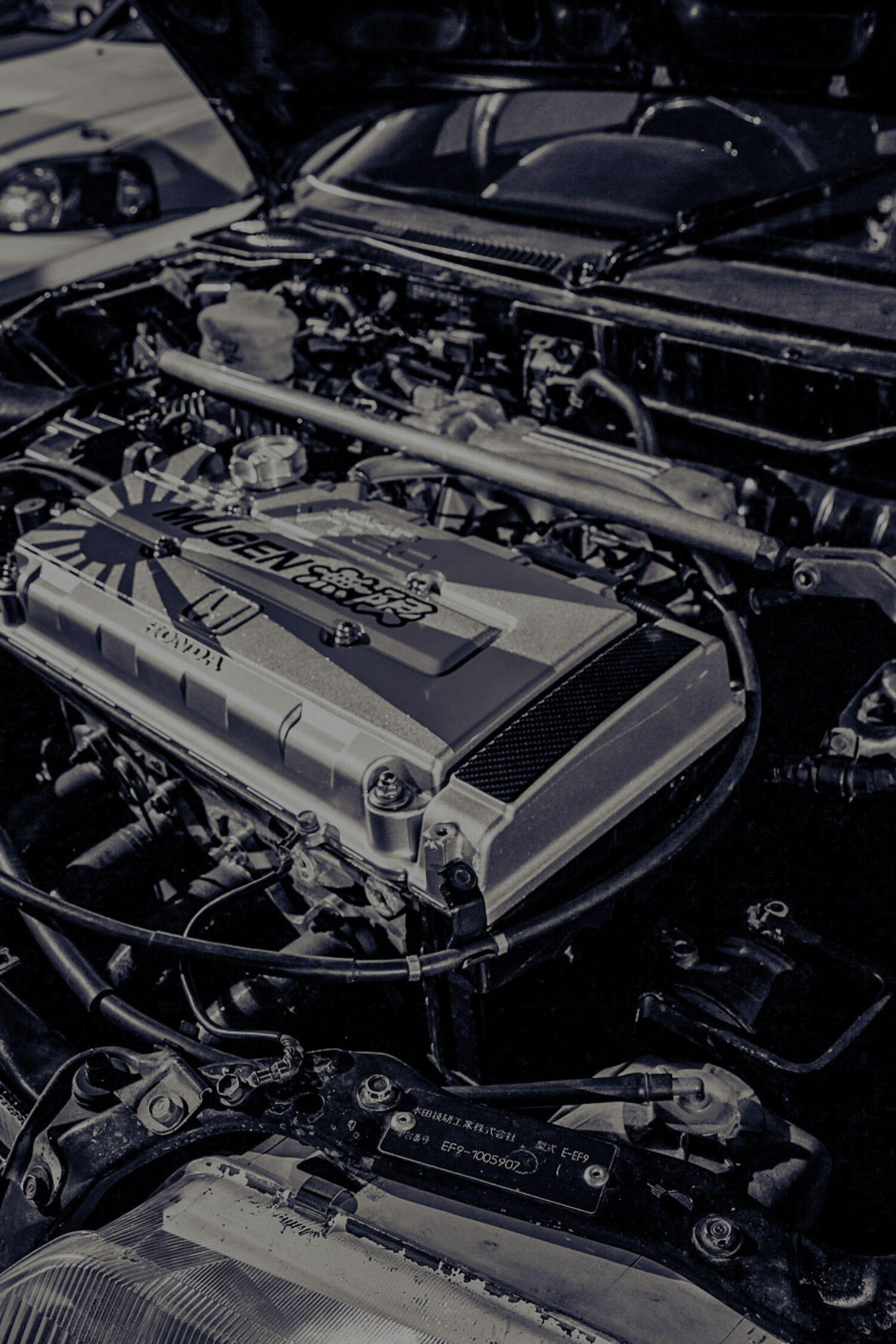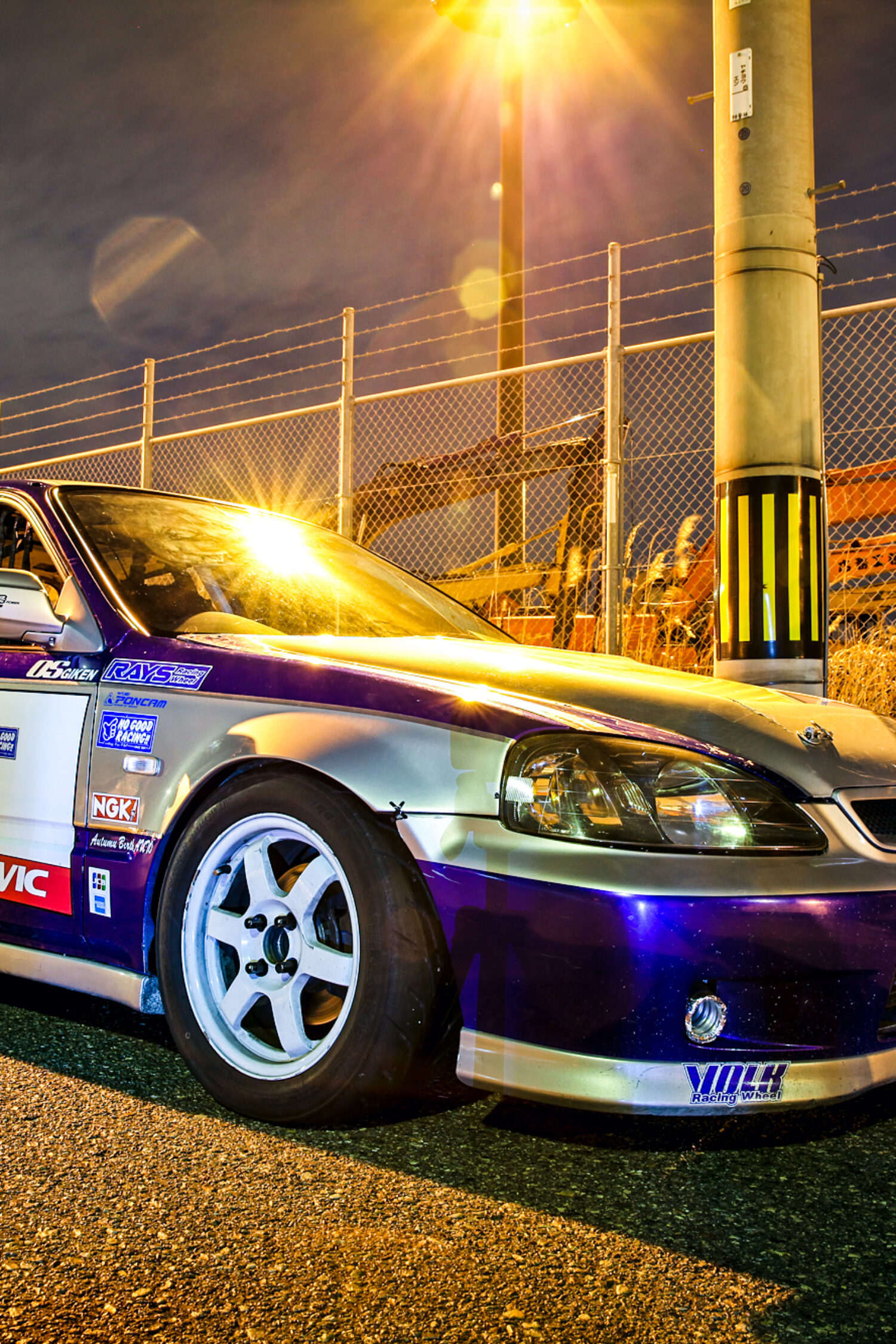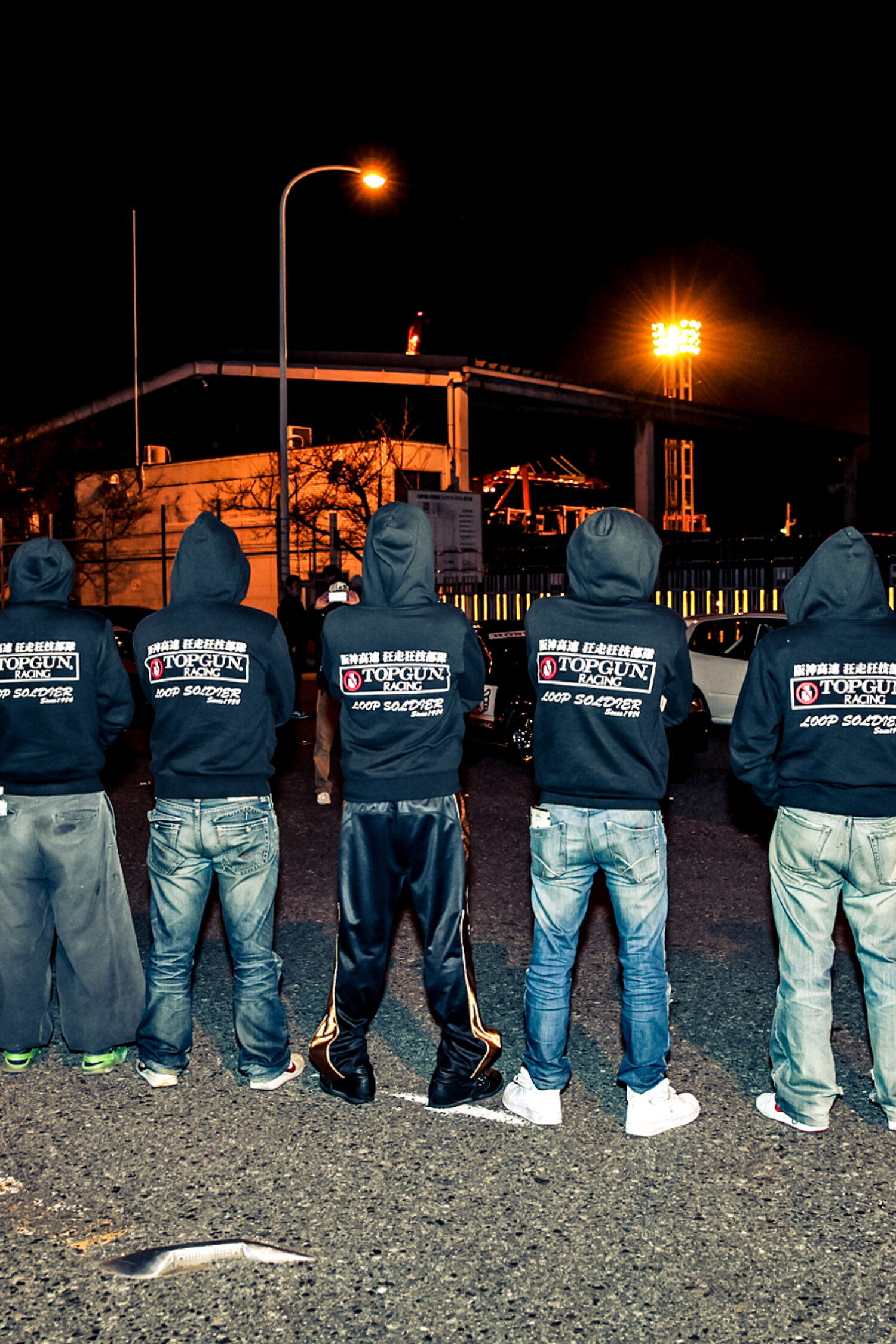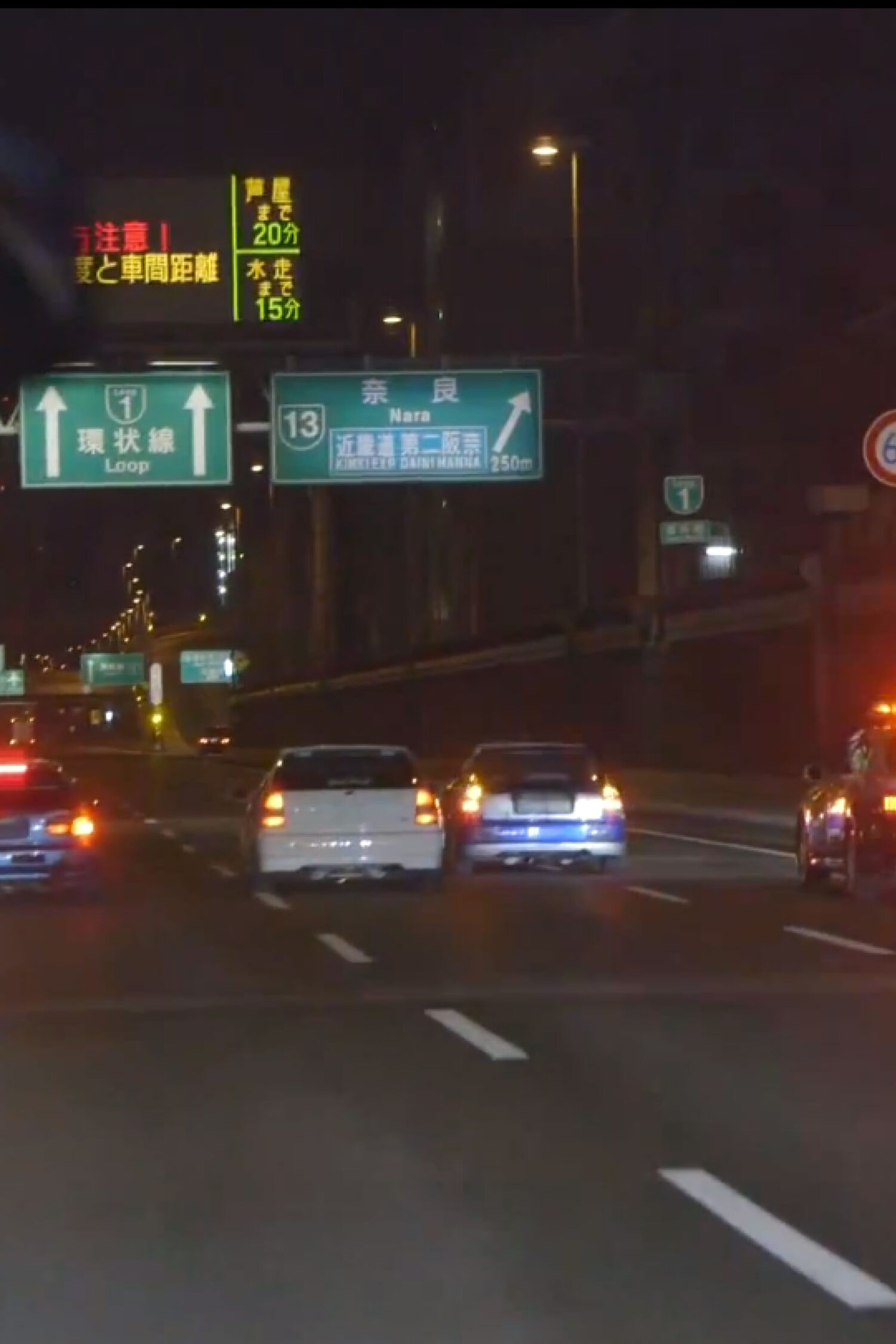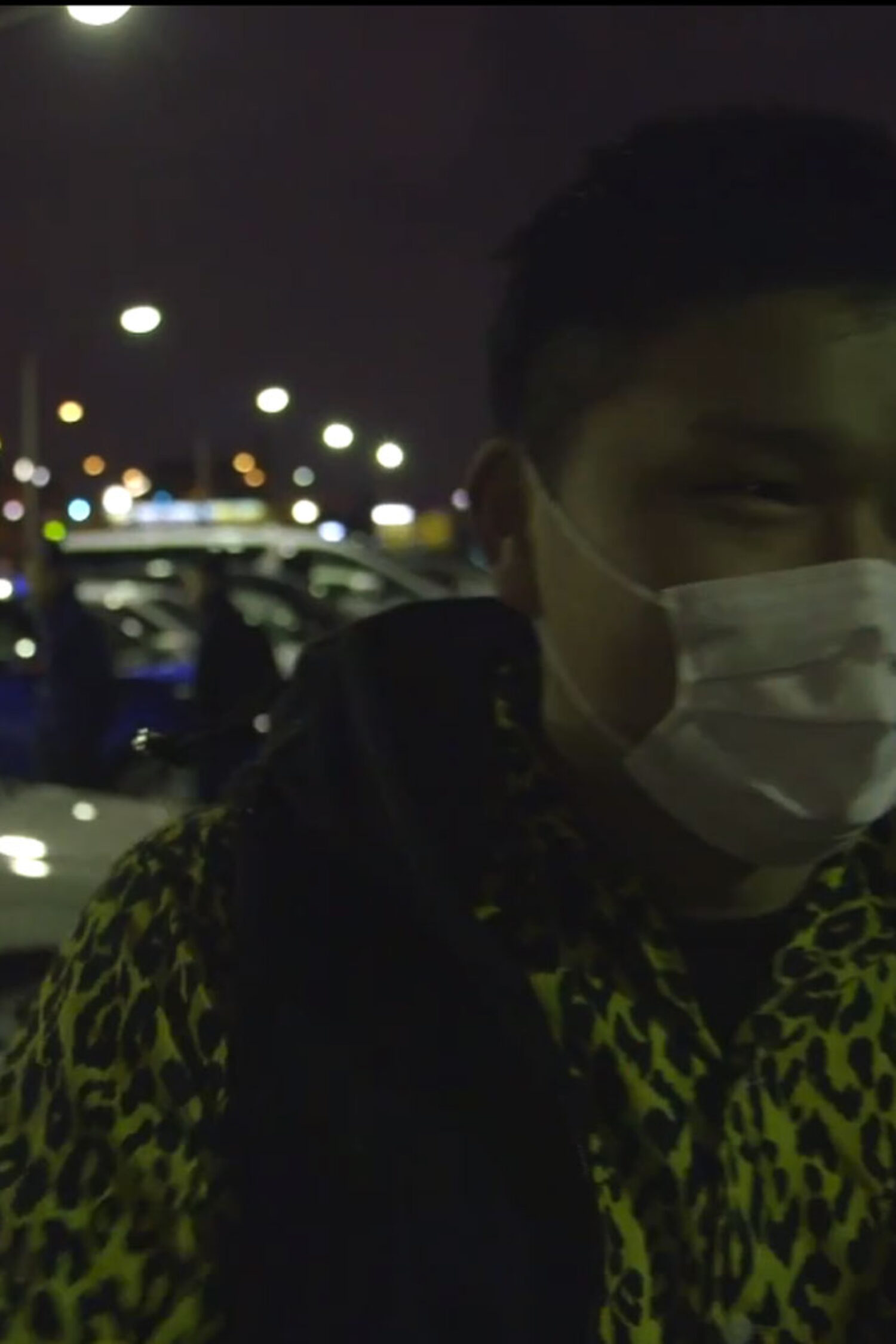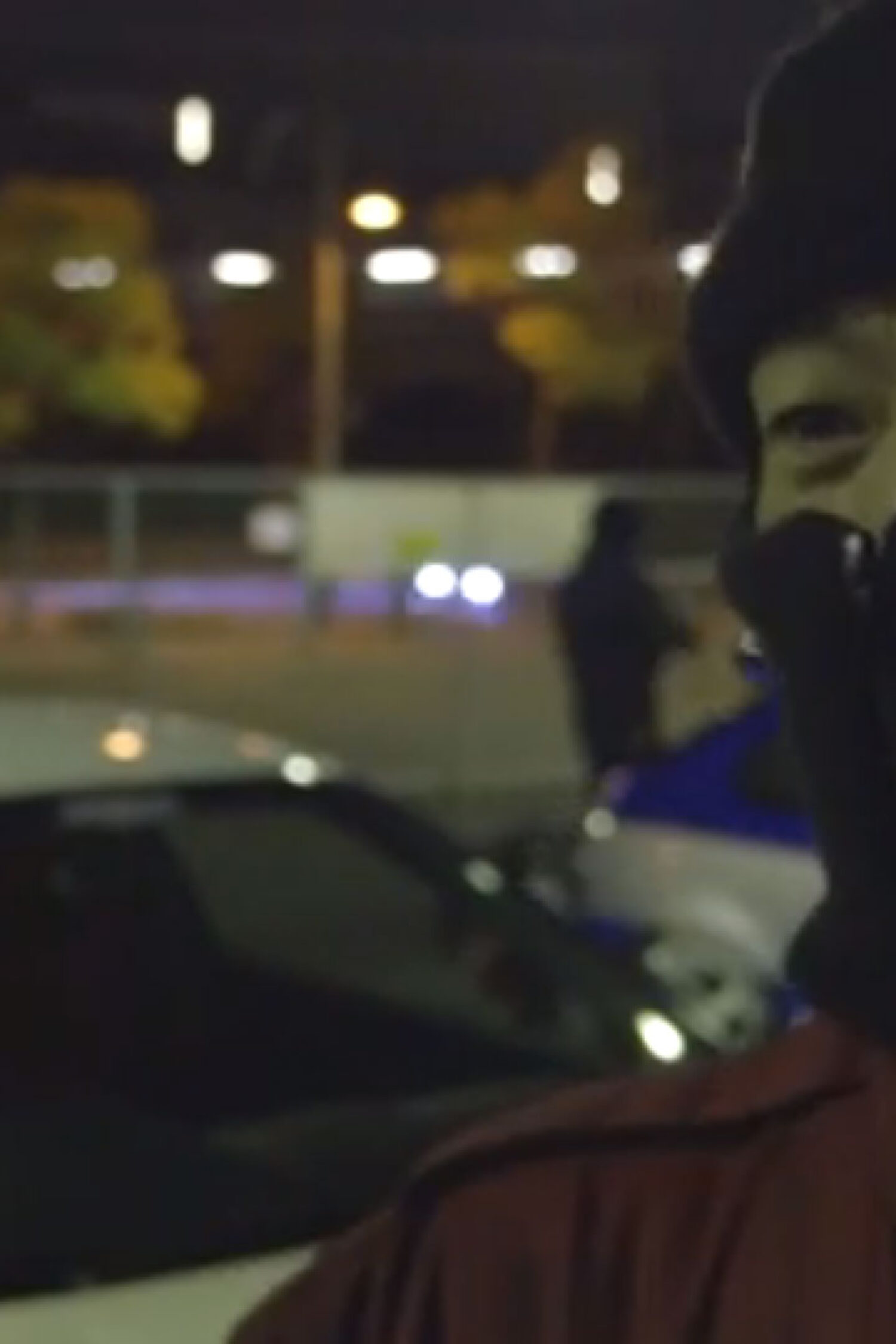There were about 25 cars in this group representing several long-running teams. I’m told that this represented a large portion of the currently active Kanjo racers and that’s it extremely rare to have this many cars in one spot. On the surface streets leading towards the loop – the pack of Civics feel more like a Japanese bosozoku gang. They bounce their engines off the rev limiters, swerve from side to side and even drive against traffic. Some of them will also engage in hakonori – the art of sitting on your door, hanging halfway outside the car while you drive down the road.
The pack rolls down the street with a complete disregard for traffic laws. During this parade, signal lights and stop signs mean nothing to these guys. Yet for as chaotic as this all is, there’s a certain sense of order to it. As the group approaches intersections, a couple of cars will break off and block the road, making sure that no cross-traffic gets by. At this hour of the night, vehicles on the road are trucks and the drivers have no choice but to sit and wait as the revving, swerving procession makes its way by.
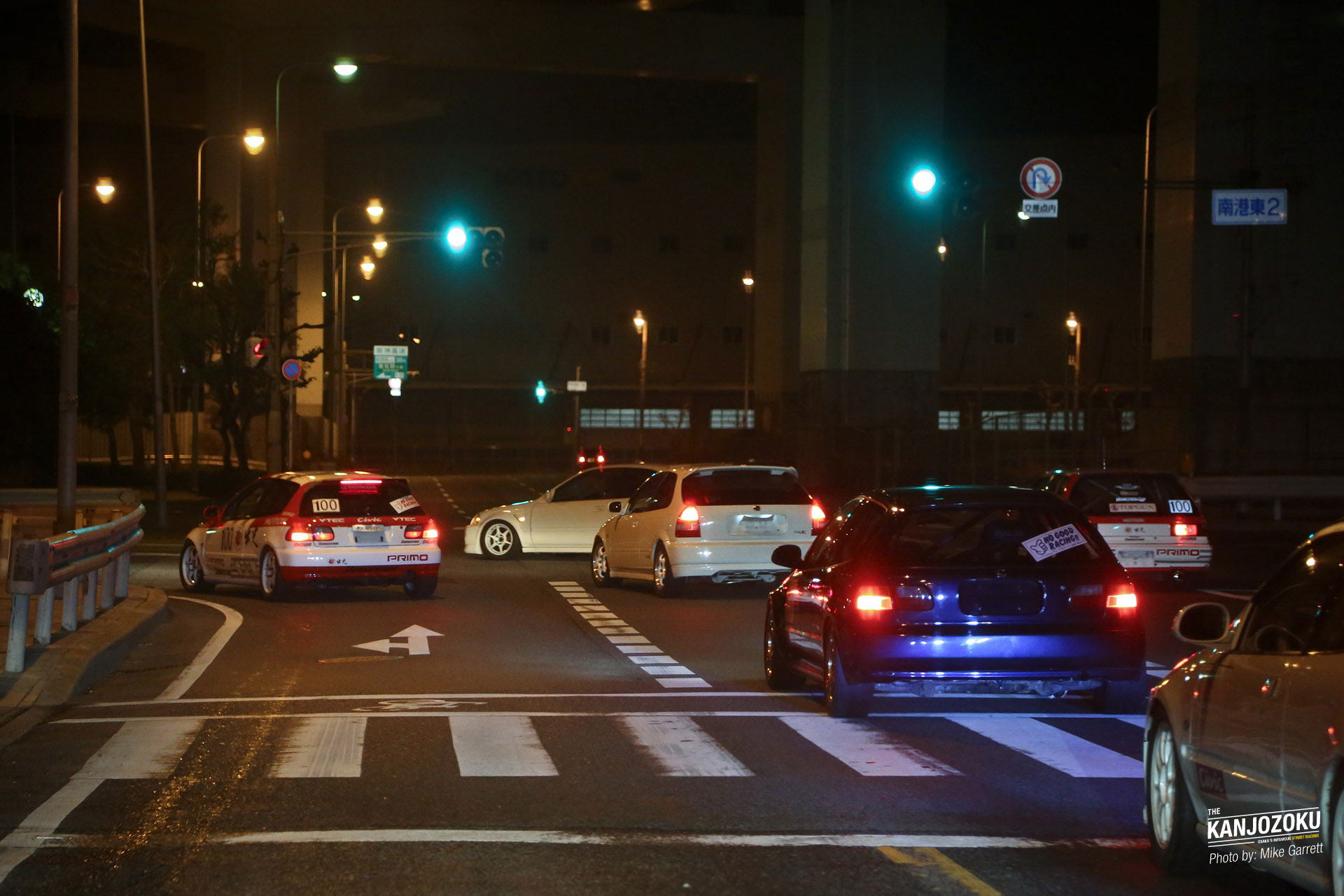
Photo by: Mike Garrett
Finally, we reach the center of the city and the entrance to the Kanjo loop. This is where another problem presents itself. Expressways in Japan have toll booths, and it isn’t like these outlaws are going to roll up and pay their fee to the attendant. Nor are their stripped out, non-legal race cars equipped automated ETC systems that keep track and calculate the fees of their highway usage. Instead, one accompanying member in a normal car will go through and keep the toll gate open as the pack makes its way through.
Once onto the highway now, the waiting game begins. Rather than enter the loop in one giant pack, the cars usually split up into smaller groups. We get detached from the racers for a moment as we cruise down the largely deserted stretch of expressway. But we know they aren’t far off. Then you see them – a group of blue and white headlights approaching quickly in the rear view mirror. They are darting from side to side with their exhaust noise bouncing off the surrounding buildings.
The few vehicles on the highway at this hour become rolling chicanes for the Kanjo racers and even on the straight, open sections of the highway the cars swerve back and forth – either putting heat into their tires like NASCAR drivers under a yellow flag or maybe just playing around.

Photo by Mike Garrett
It’s in the tight corners of the loop where the true calling of the Kanjo racer comes through. For these guys it’s not about straight line speed. It’s about taking the corners flat out, testing the limits of the car and both the skill and courage of the driver. A crash at these speeds in the concrete lined corners can easily result in severe injury or even worse.
It was also in these narrow, curved sections of pavement where the legend of the Kanjo Civic was built. Racing was happening on the loop as early as the ‘70s, but at that time you’d find the racers driving more traditional sports cars like Skylines, Fairlady Zs and Toyota Celicas. They weren’t particular different from other teams of outlaw racers across Japan. But then in the mid 1980s the third generation Civic debuted and the local street racers quickly found that the Honda’s small size, agile handling and high winding DOHC engines were well suited to the tight corners of the loop and back alleys around town.
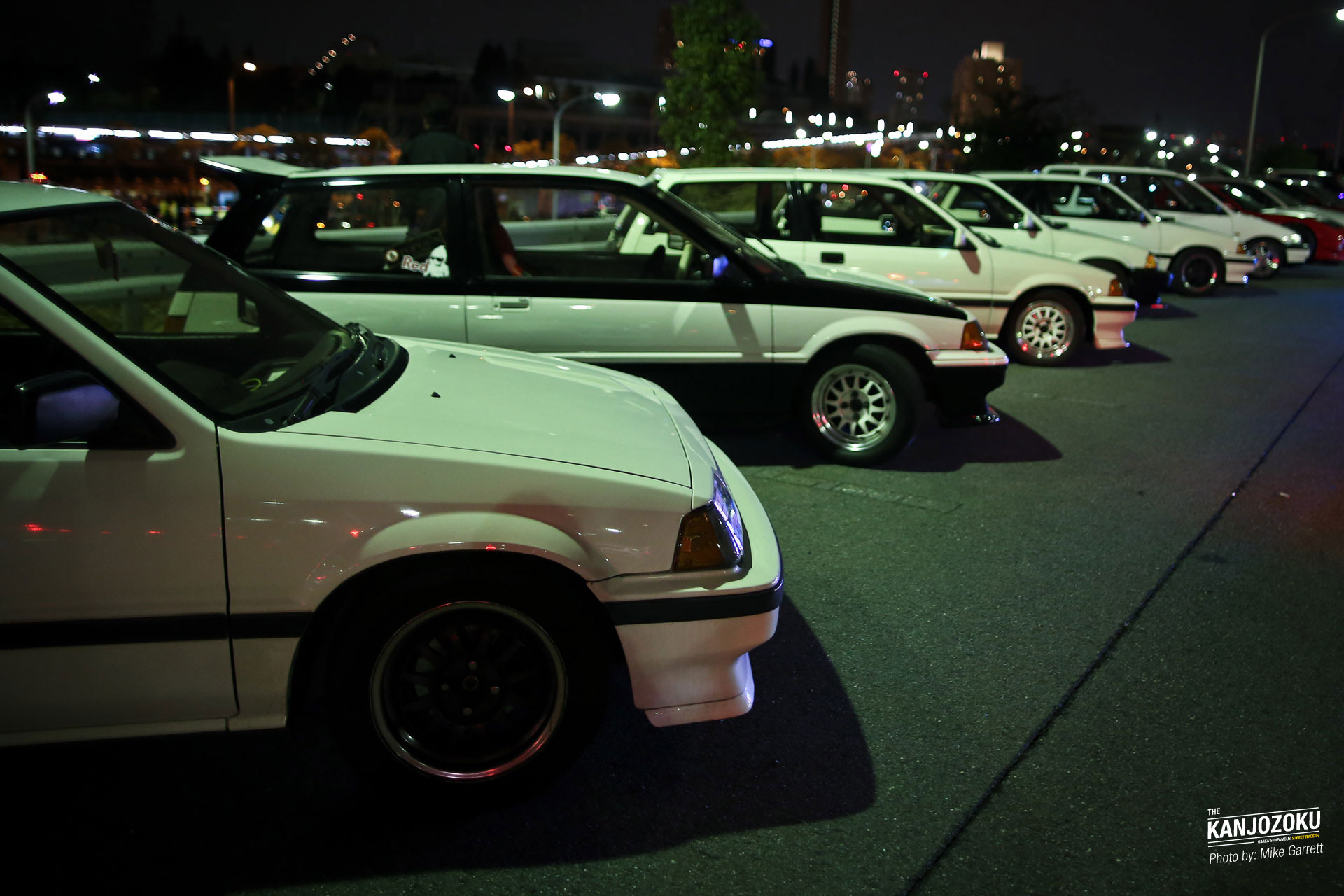
Photo by Mike Garrett
A revolution had begun, and within a few years the Civic had become universally known as the Kanjo car of choice. You’ll find enthusiasts all over Japan driving Civics at sanctioned track events and on twisty mountain roads, but it’s really only in Osaka where the carries an outlaw image. Naturally, the sight of a modified Civic driving through the city will raise some suspicion among Osaka’s police officers.
And speaking of the police, they too have come up with some unique strategies on their never-ending quest to stop the racers. Because there are relatively few entrances and exits to the loop, the police actually have an elevator that can lift patrol cars up to the highway in attempt to corner the racers. I’m told that at some points the racers even stationed vehicles outside the elevator in order to block any police cars that might enter the highway.
CONTINUE TO PAGE FOUR
Related Stories
